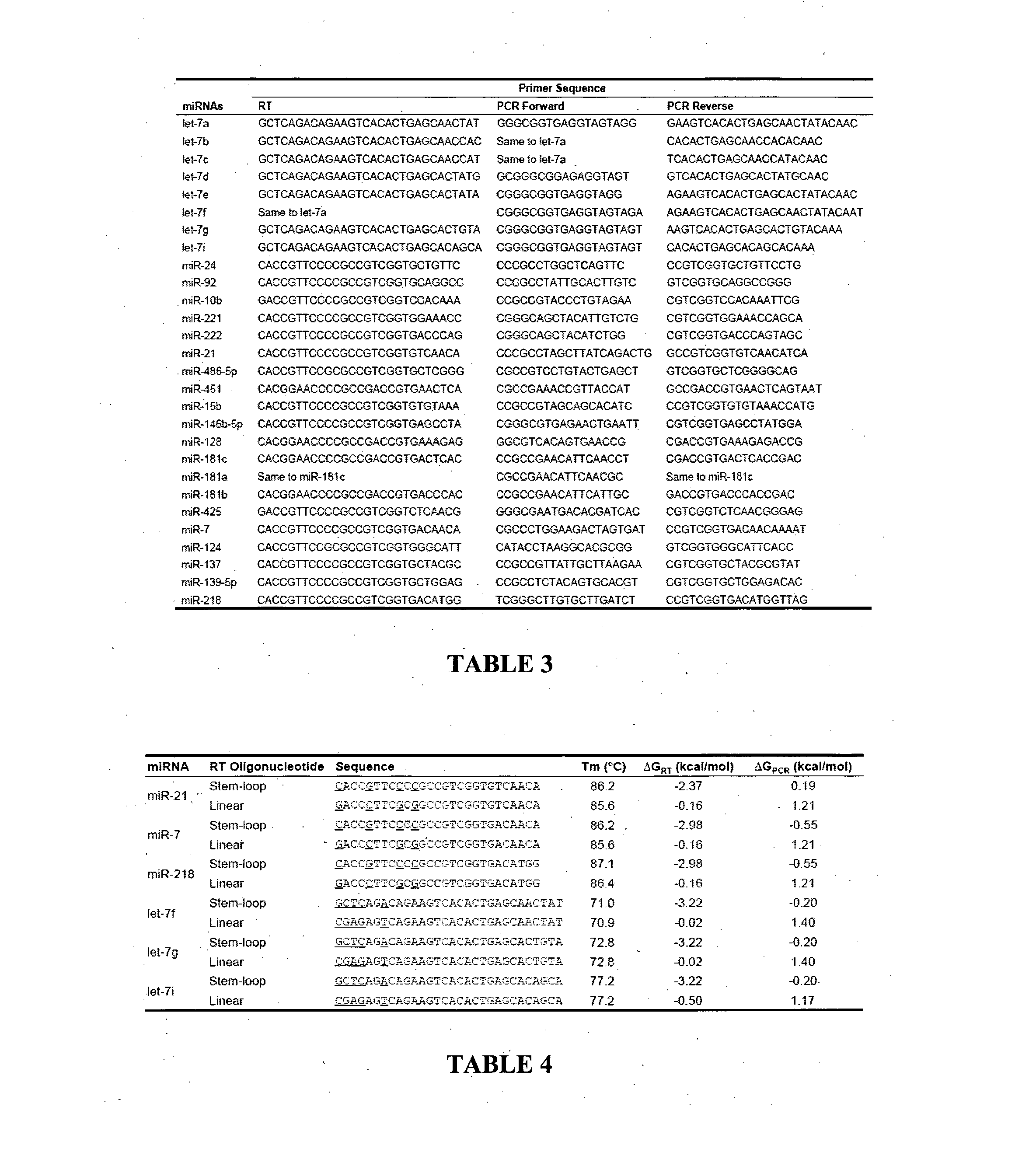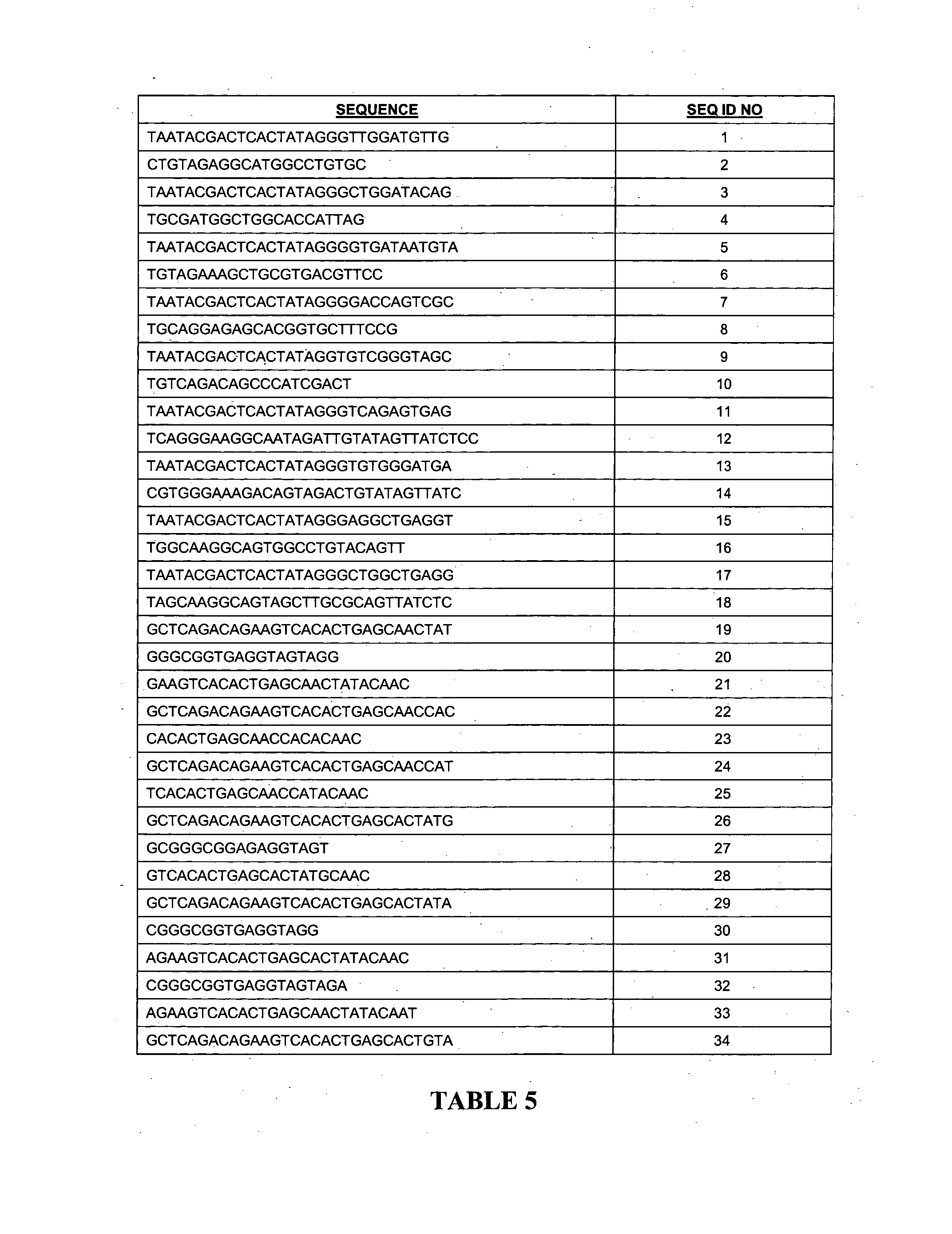Modified stem-loop oligonucleotide mediated reverse transcription and base-spacing constrained quantitative PCR
a reverse transcription and base-spacing technology, applied in the field of methods of detecting a target rna in a sample, can solve the problems of large amounts of starting rna, poor discrimination among mirna homologs, and low assay sensitivity, so as to achieve rapid detection of target rna species, enhance specificity and sensitivity, and maintain specificity and sensitivity
- Summary
- Abstract
- Description
- Claims
- Application Information
AI Technical Summary
Benefits of technology
Problems solved by technology
Method used
Image
Examples
example 1
High Performance Quantification of Mature MicroRNAs by Real-Time RT-PCR Using Deoxyuridine-Incorporated Oligonucleotides and Hemi-Nested Primers
[0100]Materials and Methods
[0101]Mature and Precursor miRNA Templates and Sequence Analysis.
[0102]Mature miRNAs were synthesized by Proligo (Sigma, St Louis, Mo., USA) or Integrated DNA Technologies (Coralville, Iowa, USA). T7 promoter sequenced tagged PCR primers were used to clone precursor miRNAs (Table 2). The purified PCR products were validated by sequencing and subjected to MEGAscript T7 Transcription kit (Ambion, Austin, Tex., USA) for in vitro transcription of precursor miRNAs according to manufacturer's instructions. Both mature and precursor miRNAs were quantified by spectrophotometry and diluted to desired concentration to serve as standards. Sequence alignment and phylogenetic analysis of miRNA homologs were performed using Vector NTI software version 8.0 (Invitrogen, Carlsbad, Calif., USA).
PUM
| Property | Measurement | Unit |
|---|---|---|
| Length | aaaaa | aaaaa |
| Cell angle | aaaaa | aaaaa |
| Length | aaaaa | aaaaa |
Abstract
Description
Claims
Application Information
 Login to View More
Login to View More - R&D
- Intellectual Property
- Life Sciences
- Materials
- Tech Scout
- Unparalleled Data Quality
- Higher Quality Content
- 60% Fewer Hallucinations
Browse by: Latest US Patents, China's latest patents, Technical Efficacy Thesaurus, Application Domain, Technology Topic, Popular Technical Reports.
© 2025 PatSnap. All rights reserved.Legal|Privacy policy|Modern Slavery Act Transparency Statement|Sitemap|About US| Contact US: help@patsnap.com



